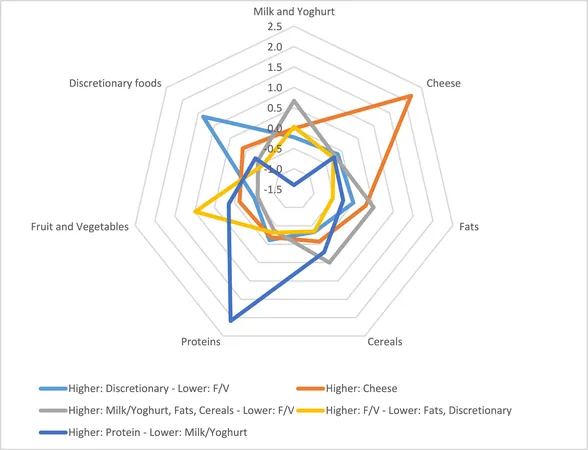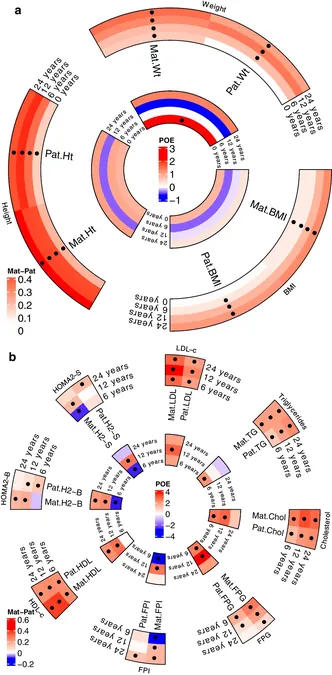
Shocking Link Between Early Life Ozone Exposure and Asthma Development in Children!
2025-04-02
Author: Arjun
Asthma has become a daunting health issue, affecting over 6% of children in the United States and solidifying its status as the most common chronic disease among kids nationwide. While air pollution has long been identified as a contributor to this worrying trend, the specific role of ozone—a pollutant frequently exceeding air quality standards—has remained somewhat of a mystery, particularly in relation to early childhood exposure.
Recent groundbreaking research led by Logan Dearborn, a doctoral student at the University of Washington, has revealed alarming findings about ozone exposure during the critical first two years of a child's life. According to a study published in JAMA Network Open, children who were exposed to high levels of ozone early on were significantly more likely to be diagnosed with asthma or experience wheezing between the ages of 4 and 6. Strikingly, this increased risk appeared to diminish by ages 8 to 9, raising questions about the complexities of asthma's development.
But what’s happening during this transition? Researchers speculate that as children grow, the nature of asthma might evolve, affecting diagnosis rates and the interaction with various environmental factors. “It’s a puzzling finding,” admits Dearborn, emphasizing the importance of understanding these early exposures. The economic fallout for families grappling with chronic conditions like asthma is substantial, making these findings crucial for public health perspectives.
Drawing from data collected by the Environmental influences on Child Health Outcomes (ECHO) program, this study examined 1,118 children from diverse U.S. cities, such as Seattle and Yakima. The analysis employed a sophisticated model created by co-author Dr. Joel Kaufman to estimate ozone exposure during crucial early developmental stages. Astonishingly, even a modest increase in ozone levels—just 2 parts per billion—increased asthma risk by 31% and the likelihood of wheezing by 30% at preschool ages, with no significant correlation found for the older age group.
Moreover, the researchers delved into the combined effects of multiple pollutants, including nitrogen dioxide and fine particulate matter (PM2.5). Remarkably, ozone emerged as the standout contributor to asthma risk when overall air pollution levels reached critical thresholds, deepening our understanding of how these harmful pollutants interact.
The findings underline an urgent need for more comprehensive research into long-term ozone exposure’s impact on children. As Dearborn noted, current regulations in the United States do not adequately address long-term ozone exposure, focusing instead on short-term values. This suggests an urgent call to action for policymakers: “Maybe we should be considering both a short- and long-term threshold for the regulation of ozone,” he argues.
In conclusion, as we continue to unveil the intricate relationship between environmental factors and childhood health, this research shines a light on the critical need for improved air quality measures to safeguard the well-being of our future generations. The effects of early life pollution exposure may have lasting consequences that we are only beginning to understand, making it essential to take these findings seriously in both public health and policy dialogues.


 Brasil (PT)
Brasil (PT)
 Canada (EN)
Canada (EN)
 Chile (ES)
Chile (ES)
 Česko (CS)
Česko (CS)
 대한민국 (KO)
대한민국 (KO)
 España (ES)
España (ES)
 France (FR)
France (FR)
 Hong Kong (EN)
Hong Kong (EN)
 Italia (IT)
Italia (IT)
 日本 (JA)
日本 (JA)
 Magyarország (HU)
Magyarország (HU)
 Norge (NO)
Norge (NO)
 Polska (PL)
Polska (PL)
 Schweiz (DE)
Schweiz (DE)
 Singapore (EN)
Singapore (EN)
 Sverige (SV)
Sverige (SV)
 Suomi (FI)
Suomi (FI)
 Türkiye (TR)
Türkiye (TR)
 الإمارات العربية المتحدة (AR)
الإمارات العربية المتحدة (AR)